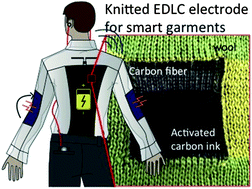| Rus | Eng |

 |

|
| Rus | Eng |

| MXene-based electrochemical glucose biosensors: Comparative enhancement with Aquivion and Nafion |
|
| Engineering Safer MXenes for Biomedical Applications: Effects of Etching and Delamination on Biocompatibility of Ti-Based MXenes |
|
| RIC2D MX-Innovation project on MXene production for water desalination and medical diagnostics takes off — Ukraine-based MXene manufacturing company Carbon-Ukraine (Y-Carbon LLC) on board! |
Carbon-Ukraine team is very exited to particpate in newly launched "MX-Innovation" three-year multinational collaboration project led by Prof. Yury Gogotsi, Drexel University (USA) to produce MXene nanomaterials. The project, which is a collaboration with Drexel University USA, Kalifa University in the UAE, the University of Padua in Italy and the Kyiv, Ukraine-based MXene manufacturing company Carbon-Ukraine, seeks to use MXene for water desalination and medical diagnostics. |
| Joint patent application MRC, Carbon-Ukraine and Drexel University on highly porous MAX phase precursor for MXene synthesis published! |
|
| MXene Symposium "The MXene Frontier: Transformative Nanomaterials Shaping the Future", IEEE NAP-2025 International Conference Bratislava, September 7-12, 2025 |
|
| Join us at the IEEE NAP-2025 International Symposium on "The MXene Frontier: Transformative Nanomaterials Shaping the Future", Bratislava, September 7-12, 2025 |
|
| New Publication Alert: "MXenes in Healthcare: Transformative Applications and Challenges in Medical Diagnostics and Therapeutics" |
|
| Pulsed Electrochemical Exfoliation for an HF-Free Sustainable MXene Synthesis |
|
| Elucidation of Potential Genotoxicity of MXenes Using a DNA Comet Assay |
MXenes are among the most diverse and prominent 2D materials. They are being explored in almost every field of science and technology, including biomedicine. Despite their proven biocompatibility and low cytotoxicity, their genotoxicity has not been addressed, so we investigated whether MXenes interfere with DNA integrity in cultured cells and examined the fragmentation of their chromosomal DNA by a DNA comet assay. |
| Ti₃C₂Tₓ MXene–silk fibroin composite films: engineering DC conductivity and properties in the THz range |
|
| 2024 MRS Fall Meeting & Exhibit, Boston, Massachusetts, from December 1-6, 2024 |
|
| Electrochemical real-time sensor for the detection of Pb(II) ions based on Ti3C2Tx MXene |
| Our team participated in the 3rd International Conference at Drexel University "MXene: Changing the World", August 5-7, 2024 |
|
| Visit to our project partners from Worcester Polytechnic Institute that joined to ESCULAPE research project consortium |
Looking forward to work together with Dr. Lyubov Titova and Dr. Jeannine Coubourne from Worcester Polytechnic Institute on structural and biomedical applications of MXenes and study of their properties within HORIZON EUROPE MSCA RISE ESCULAPE project! |
| MXenes for biomedical applications: MXene-Polydopamine-antiCEACAM1 Antibody Complex as a Strategy for Targeted Ablation of Melanoma |
|